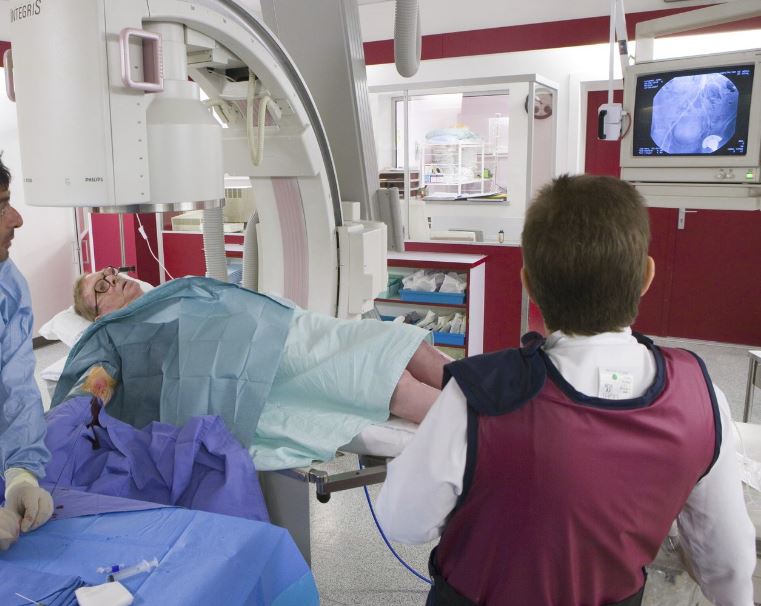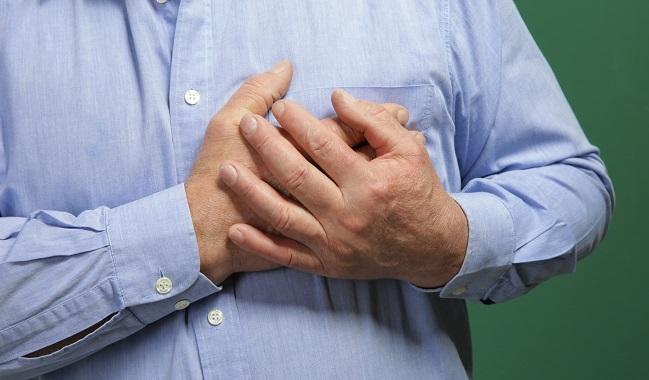What you need to know about Angiography
Contents
Angiography is a procedure that uses X-ray contrast to check the blood vessels (arteries or veins) in your body. Since blood vessels do not show clearly on a normal X-ray, contrast (a special dye) needs to be injected into your blood first. The contrast spreads through the blood and highlights the blood vessels, so that they appear on the X-ray images, allowing your doctor to see any problems in your blood vessels. The X-ray images created in angiography are called angiograms.
Angiography is performed to see how blood flows through your blood vessels and to check their health. It may be used as the first step to find and fix various problems that affect the blood vessels, such as:
-
A pulmonary embolism or blood clots, which is a blockage in the artery that supplies your lungs.
-
Angina is chest pain that is caused by reduced blood flow to your heart muscles.
-
A brain aneurysm is a bulge in a blood vessel in your brain.
-
Peripheral arterial disease is a condition in which the blood supply to your leg muscles is reduced.
-
Atherosclerosis is the narrowing of the arteries. This increases your risk of having a heart attack or stroke.
-
A blockage in the blood supply to your kidneys.

What does the Procedure Involve?
Depending on which part of your body that will be looked at, there are several types of angiography:
-
Coronary angiography – check the heart and nearby blood vessels.
-
Pulmonary angiography – checks the blood vessels that supply the lungs.
-
Cerebral angiography – check the blood vessels that supply in and around the brain.
-
Renal angiography – check the blood vessels that supply the kidneys.
In general, all types of angiography are performed the same way.
During angiography, you will be given local anesthetic and sedative to numb the affected area and to help you relax. If the procedure is done in young children, general anesthetic may be used.
Your doctor starts the procedure by creating a small cut in the skin over one of your arteries, usually near your wrist or groin. A catheter (a long, thin tube) is inserted into the artery and guided to the area being examined. Your doctor then injects a special dye (contrast) through the catheter and takes a series of X-rays as the contrast flows through your blood vessels.
In some cases, treatment may be performed at the same time of angiography, such as inserting a small tube or a balloon to open a narrowed artery. This is called angioplasty.
Once the procedure is completed, your doctor removes the catheter and place pressure on the cut to stop any bleeding. No stitches are needed.
How Long Should I Stay in the Area?
You should be able to leave the hospital on the same day, but sometimes an overnight stay is necessary. It is recommended that you stay in the local area for at least 7 days since the results of angiography are not available immediately. When the results are ready, you need to attend a follow-up checkup to discuss the results with your doctor.
What’s the Recovery Time?
You must rest for 1 day and will be able to resume most of your normal activities the next day after angiography. However, you need to avoid strenuous activities, such as vigorous exercise and heavy lifting, for a few days following the procedure.
What About Aftercare?
Your doctor will give you a set of aftercare instructions that you need to follow. The following is some of the things you need to keep in mind:
-
Do not do anything that requires attention to detail for 24 hours, such as making an important decision or signing any legal documents.
-
Do not drive or operate any machinery that could be dangerous.
-
If the catheter was placed in your wrist, do not bed your wrist deeply and be careful while using your hands.
-
If the catheter was placed in your groin, do not walk up the stars.
-
Try to do some light exercise, such as walking.
-
Drink plenty of fluids to help your body to flush out the dye.
-
Eat a heart-healthy diet that includes lots of vegetables, fruits, and whole grains.
-
Your doctor may prescribe medications, make sure to take them as and when prescribed.
-
Do not soak the site where the catheter was placed until it is fully healed.
-
If your doctor allows you to, you may be able to shower 24 to 48 hours following the procedure.
What’s the Success Rate?
Angiography is a safe and efficient procedure, with a high success rate. According to a study, the success rate for coronary angiography is 97.6%.
While angiography is generally safe, minor side effects are common, such as bruising, soreness, and a collection of blood neat the incision site. These problems are usually not serious and should improve in a few days or weeks.
Although very rare, there is also a small chance of complications. Such as an infection around the area where the cut was made, a reaction to the contrast, kidney damage due to the dye, damage to a blood vessel, heart attack, stroke, and allergic reaction to the dye.
Are there Alternatives to Angiography Procedure?
In some cases, your doctor may use scans, such as CT scans or MRI, instead of X-rays to perform angiography. These are called MRI angiography or CT angiography. Both tests are less invasive than traditional angiography. However, a CT angiography is generally not as effective as traditional angiography to detect narrowed small coronary arteries. Make sure to discuss with your doctor about the benefits and risks of each procedure.
What Should You Expect Before and After the Procedure
Before Angiography, you may experience chest pain, stroke, heart attack, or other problems, but your doctor may not know the source of the problem. After the procedure, your doctor will be able to determine the source of the problem and possibly make a diagnosis. Your doctor will also be able to see the extent of damage to the blood vessels that are being examined. The results of the test allow you and your doctor to create a treatment plan.
For an in-depth analysis of an Angiography Procedure, watch this short video.
To check prices or to book an Angiography Procedure, in Thailand or anywhere else in the world, head on over to MyMediTravel now!

